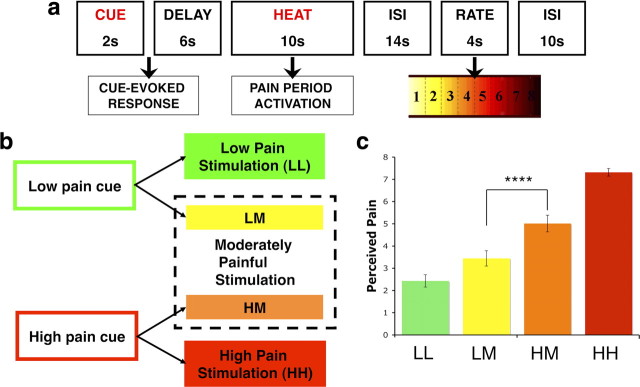Figure 1.
Experimental design and behavioral results. a, Trial structure. Each trial consisted of an auditory predictive cue followed by an anticipatory delay and 10 s of noxious thermal stimulation. fMRI analyses used single trial analysis to model brain responses evoked during anticipation and noxious thermal stimulation periods. After a fixed interstimulus interval, participants reported trial-by-trial perceived pain using a visual analog scale. b, Conditions of interest. During the first two runs of the task, low-pain cues always preceded low-pain stimulation (LL) and high-pain cues preceded high-pain stimulation (HH). In runs three through eight, trials were evenly divided between these conditions and trials in which each predictive cue was followed by a stimulus calibrated to elicit moderate pain [high cue plus medium pain (HM); low cue plus medium pain (LM)]. We included only HM and LM trials in our mediation analyses to examine cue-based expectancy effects during a single level of noxious thermal stimulation. c, Behavioral results. All participants reported greater pain on HM than LM trials. This difference comprises the “total effect” (path c) in our pain-period multilevel mediation analysis (analysis 1). ****p < 0.0001.

